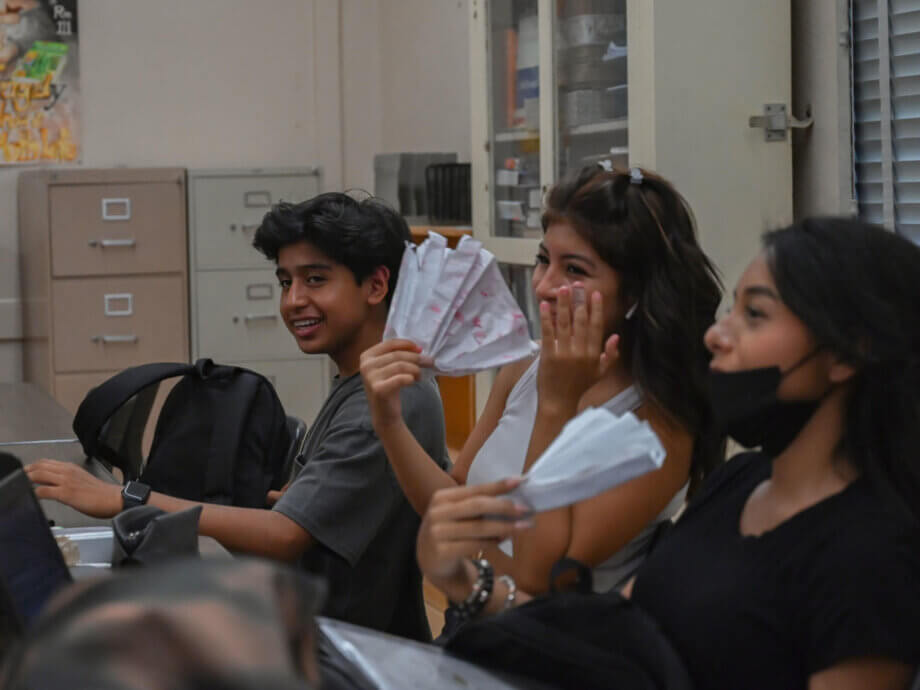China’s Students Face Scorching Heatwaves: Dormitory Dilemmas and Creative Survival
As China endures some of its hottest summers on record, students across the country’s eastern regions are finding themselves at the epicenter of a growing crisis. With temperatures soaring above 40°C (104°F), many university dormitories—often housing four to eight students per room and lacking air conditioning—have become unbearable. The result: a wave of student ingenuity, institutional scrambling, and a national conversation about climate resilience, energy demand, and the future of student life in a warming world.
- China’s Students Face Scorching Heatwaves: Dormitory Dilemmas and Creative Survival
- How Are Students Coping With the Heat?
- Tragedy and Outcry: The Human Cost of Extreme Heat
- Universities Scramble to Respond: Air Conditioning and Alternative Shelters
- Why Are Dormitories So Hot? The Infrastructure Gap
- Climate Change: The Bigger Picture
- Innovative and Sustainable Cooling Solutions
- What’s Next? Policy, Preparedness, and the Future of Student Life
- In Summary
How Are Students Coping With the Heat?
For many students, the annual “sanfu” season—China’s notorious “dog days” of summer—has always meant a few sticky nights. But in 2024, the heat arrived early and with unprecedented intensity, catching millions off guard. Students have responded with a mix of desperation and creativity:
- Camping in Hallways and Supermarkets: Students drag their bedding into air-conditioned hallways, libraries, and even supermarkets, seeking relief from stifling dorm rooms.
- Hotel Escapes: For those who can afford it, checking into a hotel for a night or two offers a rare chance to sleep in cool comfort. But as one 20-year-old student from Changchun told the BBC, “Checking into a hotel is a huge expense for us students.”
- Homemade Air Conditioners: Many students resort to low-cost hacks, such as placing a bowl of ice cubes in front of a fan—a “homemade air-conditioner”—to cool their rooms.
- Tents in Air-Conditioned Corridors: In Jilin province, students have been seen sleeping in tents lining air-conditioned hallways, while others in Shandong province have taken to squatting in supermarkets or sleeping in libraries arranged by their universities.
These makeshift solutions highlight both the resilience and vulnerability of China’s student population. As one student put it,
“When I was young the summers in the northeast were really comfortable. But now the summers are getting hotter and hotter.”
Tragedy and Outcry: The Human Cost of Extreme Heat
The dangers of the heatwave became tragically clear when a dormitory supervisor—affectionately known as the “dormitory uncle” for his care of stray cats—was found dead in his room at Qingdao University. While the cause of death remains under investigation, many believe heatstroke played a role. The same day, a student at the university was hospitalized for heatstroke, further fueling concerns about campus safety and living conditions.
Social media quickly filled with tributes and calls for reform. One Weibo user wrote,
“The quality of a university does not lie in how many buildings it has, but rather how it treats the regular people who quietly support the school’s operation.”
These incidents have cast a harsh spotlight on the adequacy of university facilities and the broader issue of how institutions protect their most vulnerable members during extreme weather events.
Universities Scramble to Respond: Air Conditioning and Alternative Shelters
In the wake of public outcry and health emergencies, universities across eastern China have announced urgent measures:
- Air Conditioning Upgrades: At least six colleges in Shandong province, including Qingdao University and Yantai Nanshan University, have pledged to install air conditioning in student dormitories over the summer break.
- Library Sleepovers: Some universities are allowing students to sleep overnight in air-conditioned libraries while dormitories are being renovated.
- Temporary Cooling Centers: Air-conditioned restaurants and supermarkets have become informal refuges, with video footage showing students sprawled on floors to escape the heat.
These responses, while welcome, also underscore the scale of the challenge. As one high school student in Jinan city told the BBC,
“Without air-conditioning, it’s too hot to survive.”
Why Are Dormitories So Hot? The Infrastructure Gap
Many Chinese university dormitories were built decades ago, designed for a different climate and era. Air conditioning was once considered a luxury, not a necessity. But as summers grow hotter and heatwaves more frequent, the lack of cooling infrastructure has become a glaring problem.
According to a large-scale survey published in ScienceDirect, students’ choices of cooling methods are shaped by cost and convenience. While some prefer water-cooled fans or floor fans, price remains the primary factor. This explains the popularity of homemade solutions and the reluctance to use hotels except as a last resort.
Institutional responses are also shaped by budget constraints and the sheer scale of the student population. In Shanghai, for example, the municipal education commission has provided air conditioners and ice cubes for students taking college entrance exams, but such measures are not yet universal.
The Power Grid Under Pressure
The surge in air conditioning use has put enormous strain on China’s electricity grid. In early July 2024, nationwide electricity demand reached a record high, with air conditioning accounting for more than a third of the load in eastern China. According to Ember, cooling needs contributed to a 31% year-on-year increase in electricity demand during the hottest months, forcing utilities to ramp up coal-fired power generation to avoid blackouts.
Climate Change: The Bigger Picture
China’s heatwaves are not isolated events. Scientists have linked the increasing frequency and severity of extreme weather to global climate change. In 2022, China experienced its worst heatwave since 1961, with some regions enduring a 79-day hot spell. The following year, Xinjiang recorded a staggering 52.5°C—the highest temperature ever noted in China. In 2024, July became the hottest month since national records began.
According to The Lancet, heatwaves caused more than 50,000 deaths in China in 2022 alone. The risks are not evenly distributed: students, the elderly, and outdoor workers are among the most vulnerable.
Broader Societal Impacts
While students seek refuge indoors, millions of gig economy workers—such as delivery drivers and construction laborers—must brave the heat with little protection. Bloomberg reports that although Chinese law mandates a “heat wave allowance” for workers, enforcement is spotty, and most gig workers receive no extra pay or benefits. The health costs, both physical and financial, fall heavily on those least able to bear them.
Innovative and Sustainable Cooling Solutions
As the demand for air conditioning rises, so does the need for sustainable solutions. Experts warn that relying on fossil fuels to meet cooling needs will only worsen climate change, creating a vicious cycle of hotter summers and higher emissions.
Nature-Based Urban Cooling
Cities like Guangzhou are experimenting with nature-based solutions to reduce urban temperatures. These include:
- Expanding green spaces and water bodies to create natural cooling zones
- Greening building facades and rooftops to insulate against heat
- Restoring traditional architectural features that promote ventilation
- Designing urban layouts to channel wind and dissipate heat
According to the World Bank, such measures can reduce indoor air temperatures by 3–5°C and deliver significant economic and health benefits.
Energy-Efficient Technologies
Promoting the use of energy-efficient air conditioners, rooftop solar panels, and improved electricity pricing can help reduce the strain on power grids. Ember’s analysis suggests that incentivizing efficient cooling devices and integrating renewable energy sources are key to meeting future demand without exacerbating climate change.
What’s Next? Policy, Preparedness, and the Future of Student Life
The heatwave crisis has exposed gaps in China’s infrastructure and emergency preparedness. Universities are now under pressure to upgrade facilities, not just for comfort but for health and safety. Policymakers face the challenge of balancing immediate needs—such as installing air conditioning—with long-term sustainability goals.
Meanwhile, students continue to adapt, innovate, and advocate for better conditions. Their experiences offer a window into the broader challenges facing China—and the world—as climate change accelerates.
In Summary
- Record-breaking heatwaves in China have made student dormitories unbearable, forcing students to seek creative cooling solutions.
- Tragic incidents, including a dormitory supervisor’s death and student hospitalizations, have sparked public outcry and institutional reforms.
- Universities are scrambling to install air conditioning and provide alternative shelters, but infrastructure gaps remain.
- Surging air conditioning use has strained China’s power grid, highlighting the need for sustainable energy solutions.
- Climate change is driving more frequent and severe heatwaves, with students, workers, and the elderly among the most vulnerable.
- Nature-based urban cooling and energy-efficient technologies offer hope for a more resilient future.
- The crisis has prompted a national conversation about preparedness, equity, and the future of student life in a warming world.




